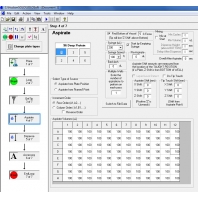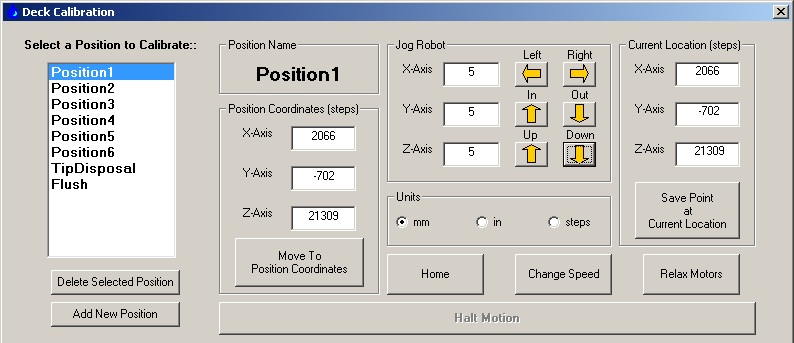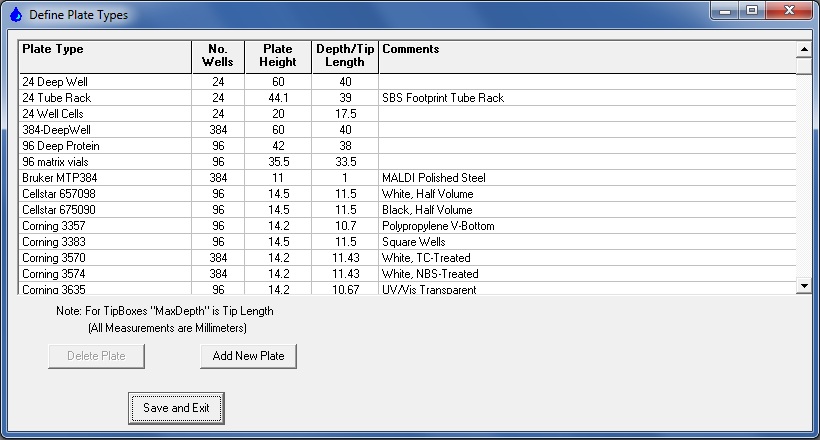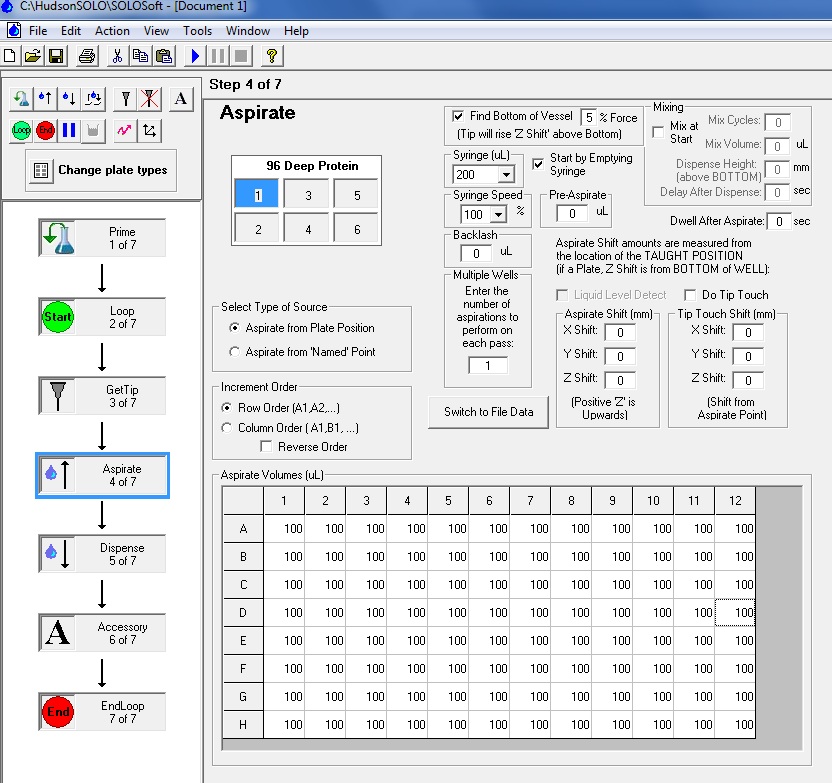SoloSoft
SOLOSoft is the software program included with Hudson‘s SOLO Automated Pipettor. It can be used as a direct control panel to operate the SOLO in standalone mode, or it can be run in the background by Hudson’s own SoftLinx, or other workcell control schedulers, as part of an automated workcell.
SOLOSoft makes it easy to develop SOLO pipetting methods. The user simply “Drags-and-Drops” method steps into a graphical flow chart. No programming expertise or specialized knowledge is required.
Pipetting methods developed using SOLOSoft can be saved to files that can be opened and used at a later time. They can also be used when SOLOSoft is being run from an external software program, like SoftLinx.
The menubar of SOLOSoft is shown below. Using the menu bar, the SOLO user can create new pipetting methods, load and run saved methods, select serial ports, calibrate and teach nest locations, add new plate definitions, and perform all the tasks needed to operate and maintain this versatile robotic pipett
The screen below shows a typical, simple pipetting method, whose steps are lined-up in a straight flow chart along the left side of the screen. On the right side are the details of the highlighted step in this example, an “Aspirate” step. The right side displays the parameters of this step, which the user selected when creating this method
Creating this method requires only that the user arrange the desired steps in the proper order, then run the method. It can be saved and called up at a future time as well. SOLOSoft has a full set of steps and functions (such as Loops) that allow the user to design a very simple or very complex set of pipetting actions, however necessary to accomplish the liquid handling actions desired.
- Features
SOLOSoft provides all the tools the user needs to setup the pipettor, define its environment, assign serial ports to the SOLO and its accessories, develop pipetting methods and maintain the system.
Using the “Tools” menu from SOLOSoft’s main screen, shown below, the user has access to the setup features listed below:
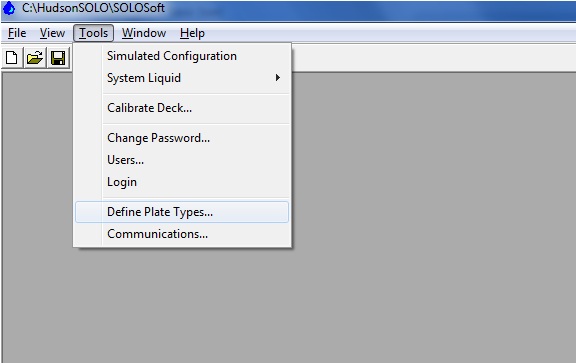
The “Calibrate Deck…” feature gives the user the ability to teach the SOLO the standard plate nest positions, plus any other position where the user may wish the SOLO to perform an operation, such as the locations of tubes, flasks, reservoirs or custom devices that are within its reach:
The “Define PlateTypes…” feature enables the user to add to the considerable library that Hudsonprovides to define the dimensions and attributes of labware that the user may wish to employ with the SOLO:
The “Communications…” feature enables the user to select which serial ports on SOLOSoft’s computer are connected to the SOLO and its accessories, such as the Shaker, or the Hot/Cold Nest, etc., if so equipped:
And, other tools to control passwords, levels of access, login privileges and to test the pipetting mechanisms are provided.
The Method Display, shown below, enables the user to “Drag-and-Drop” a complete set of pipetting steps into position in the Method “flow chart”. Each type of step has its own icon button (in the upper left-hand portion of the screen) for easy identification and selection:
 |
Prime |  |
Aspirate |
 |
Dispense |  |
HitPick |
 |
GetTip |  |
ShuckTip |
 |
Move Arm |  |
Begin Loop |
 |
End Loop |  |
Pause SOLO |
 |
Get Liquid Level |  |
Set Arm Speed |
 |
Run Accessory: (Micro10, 4-Way Valve, 10-Way Valve, Shaker Nest, Read/Write I/O, Hot/Cold Nest) |

